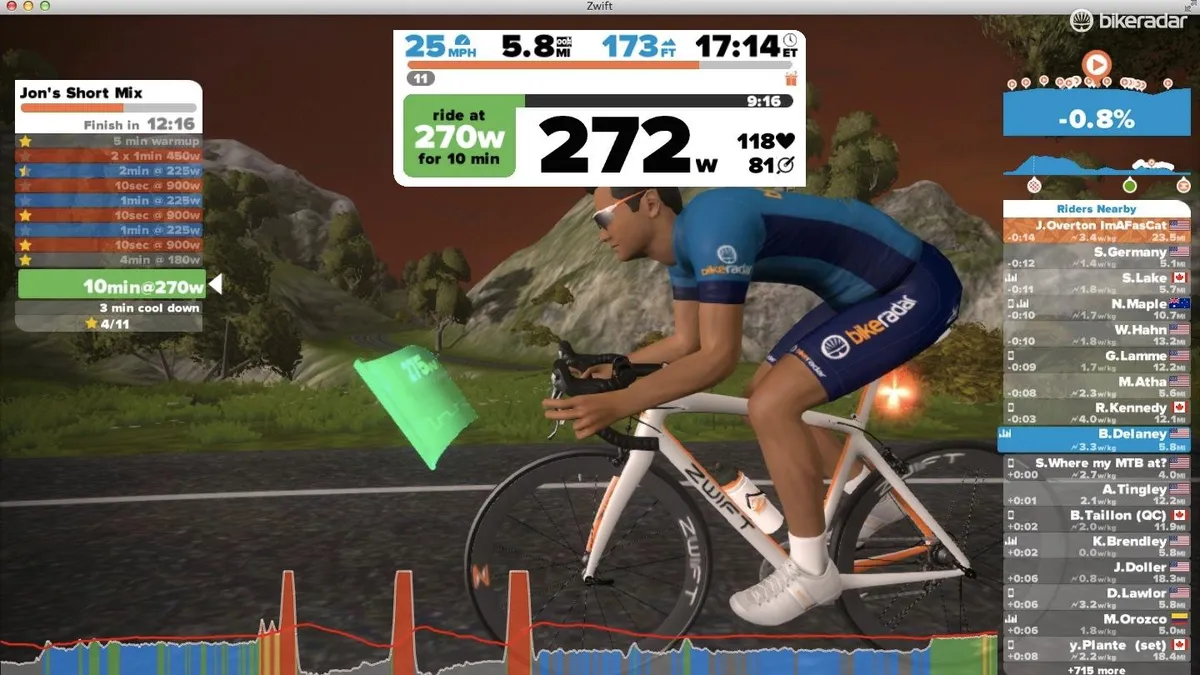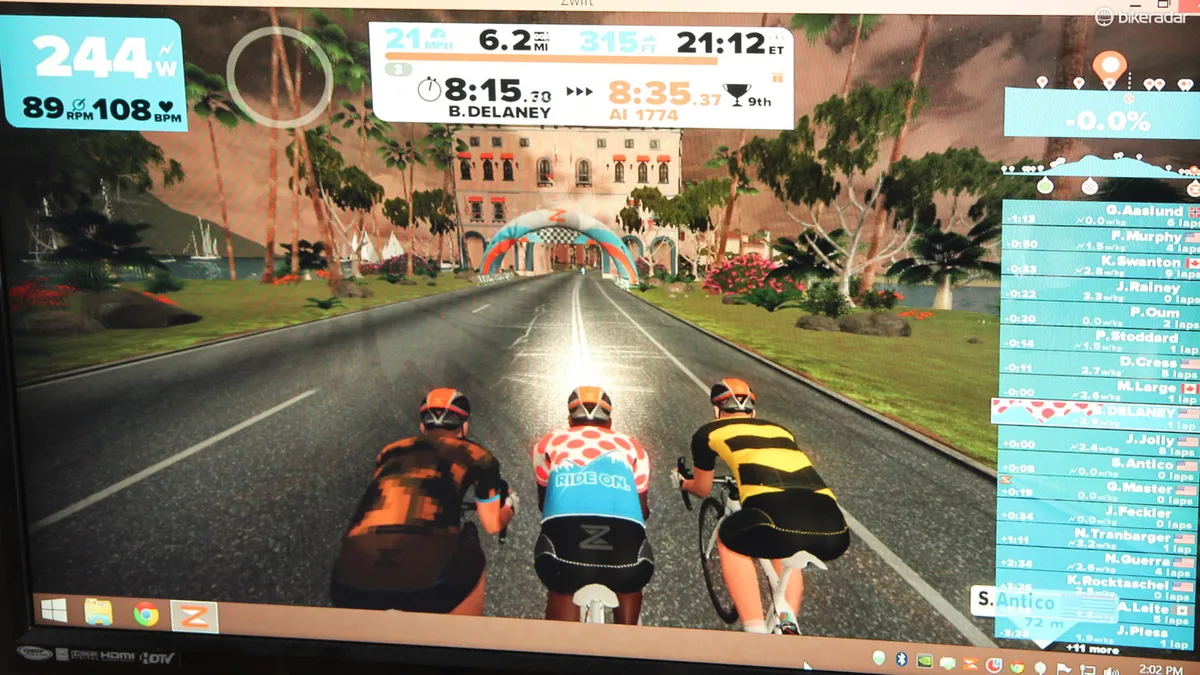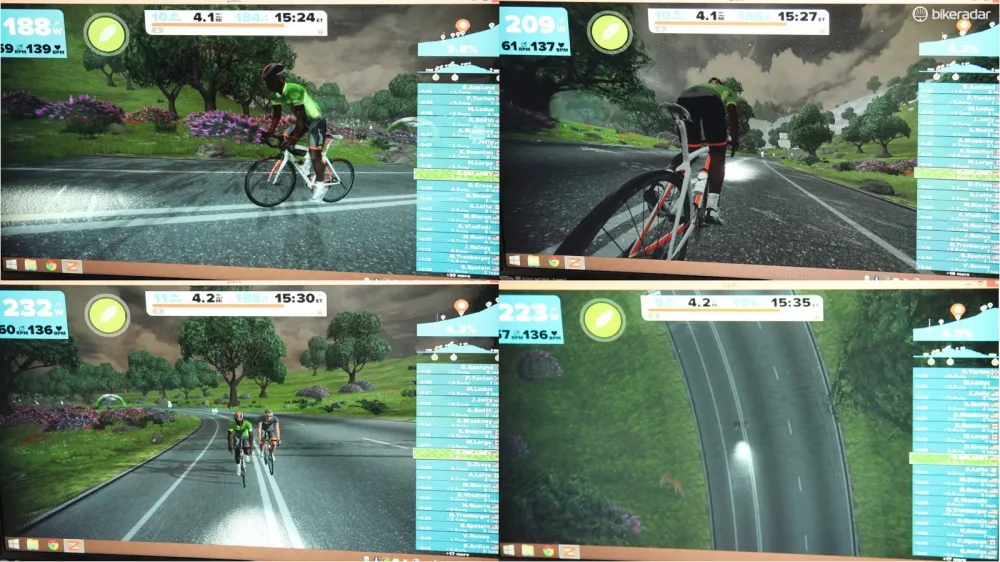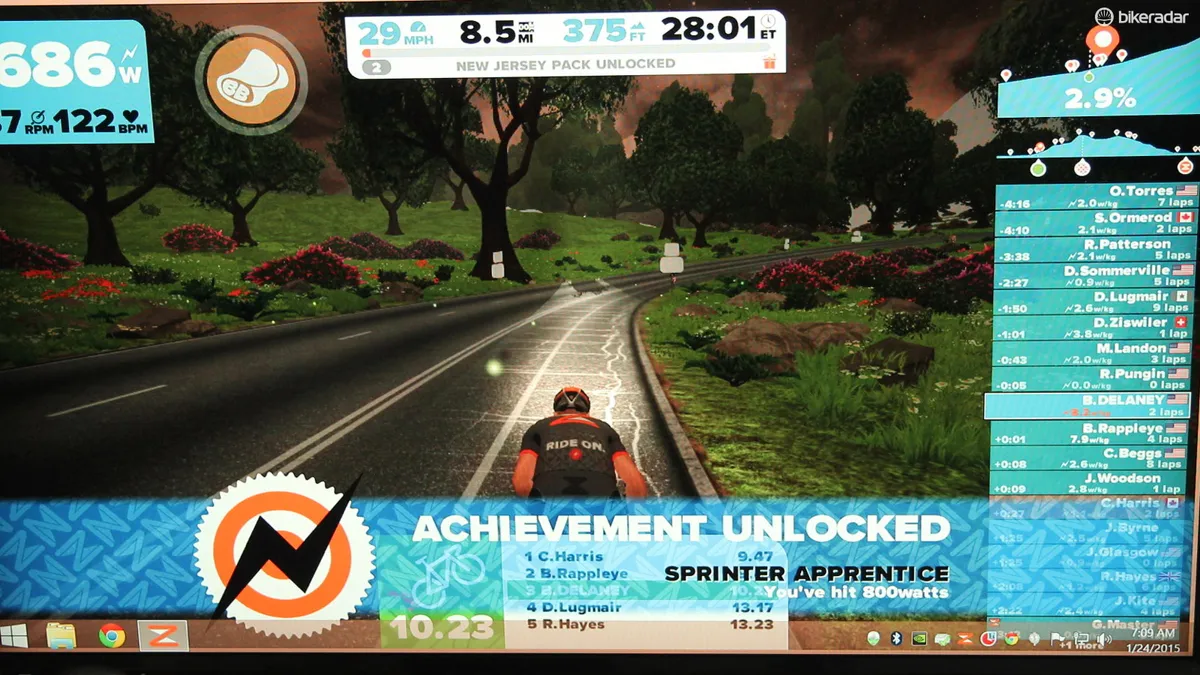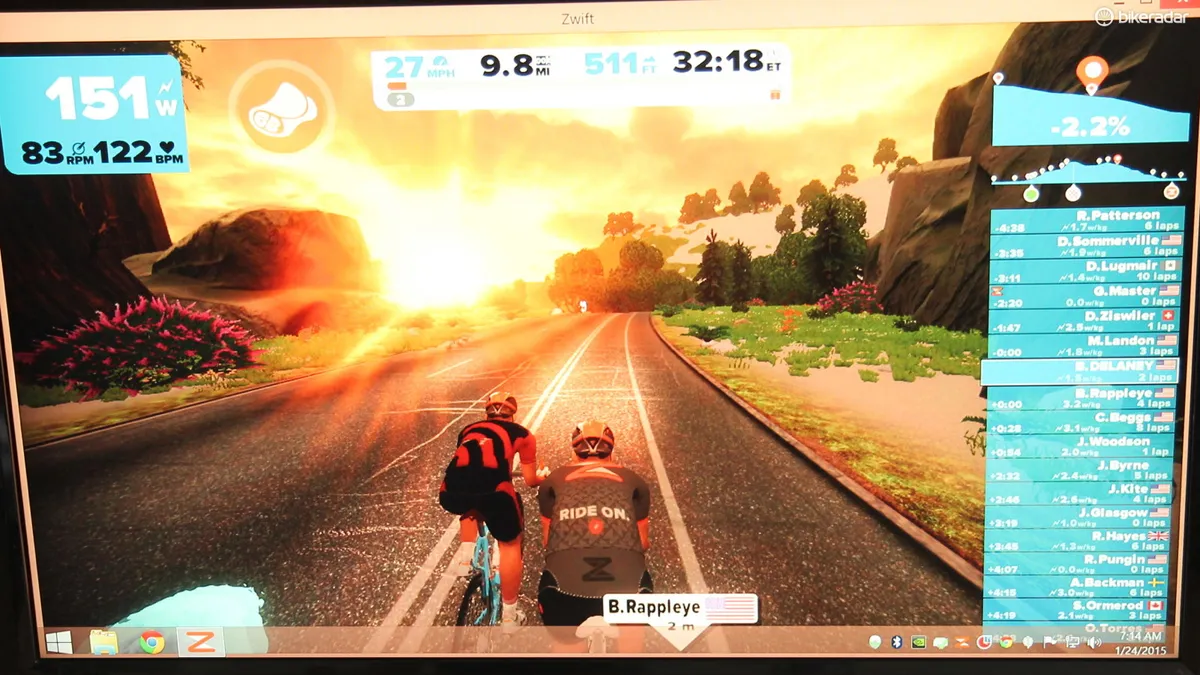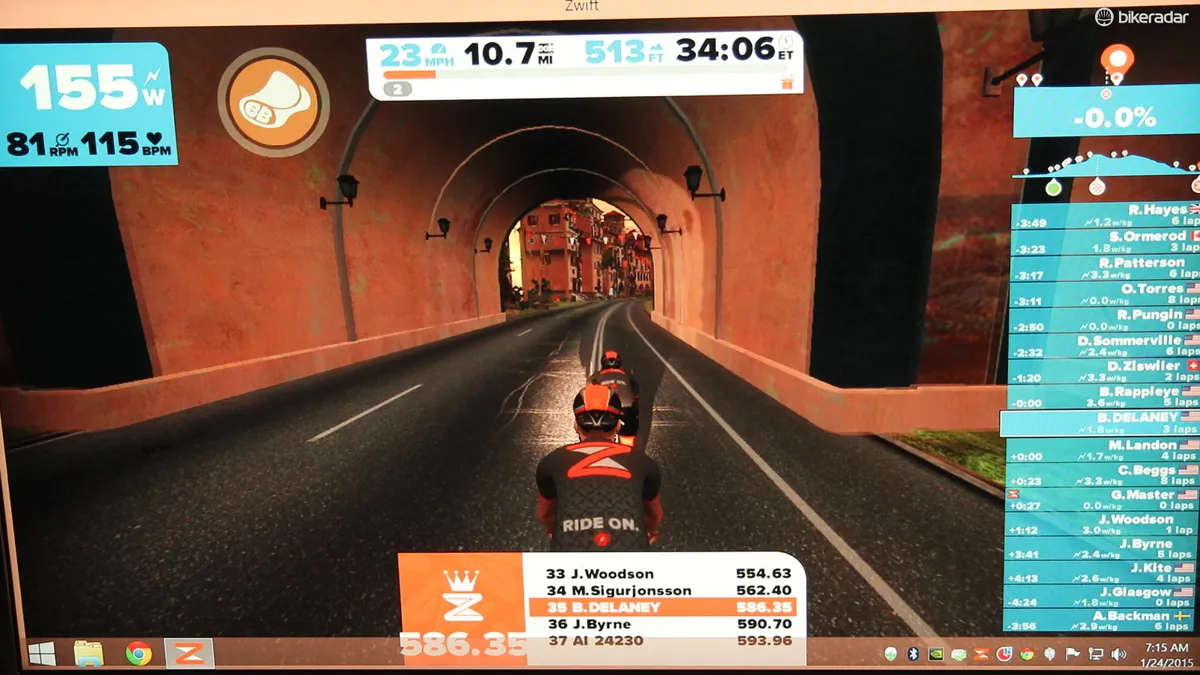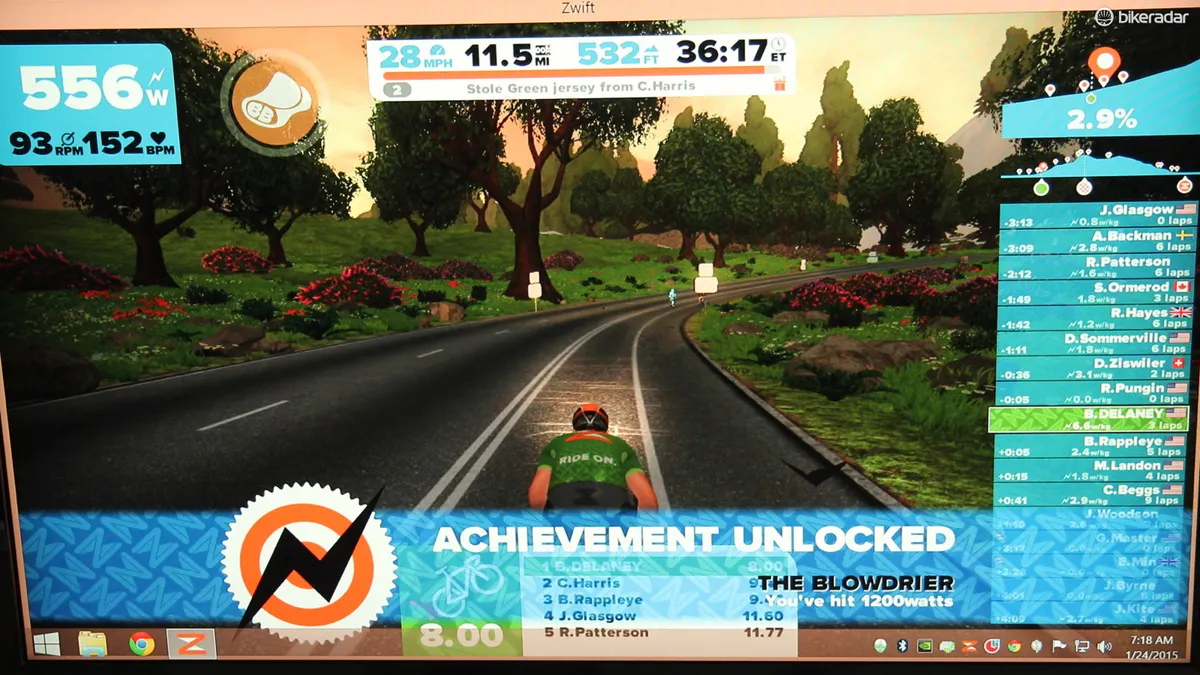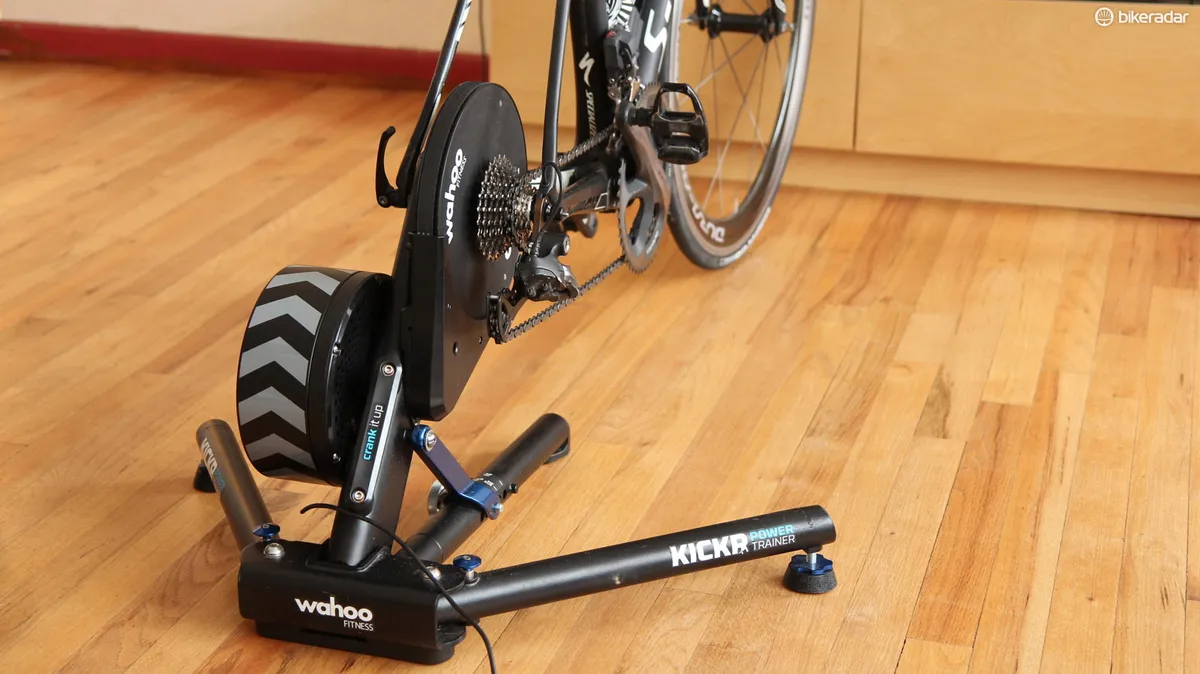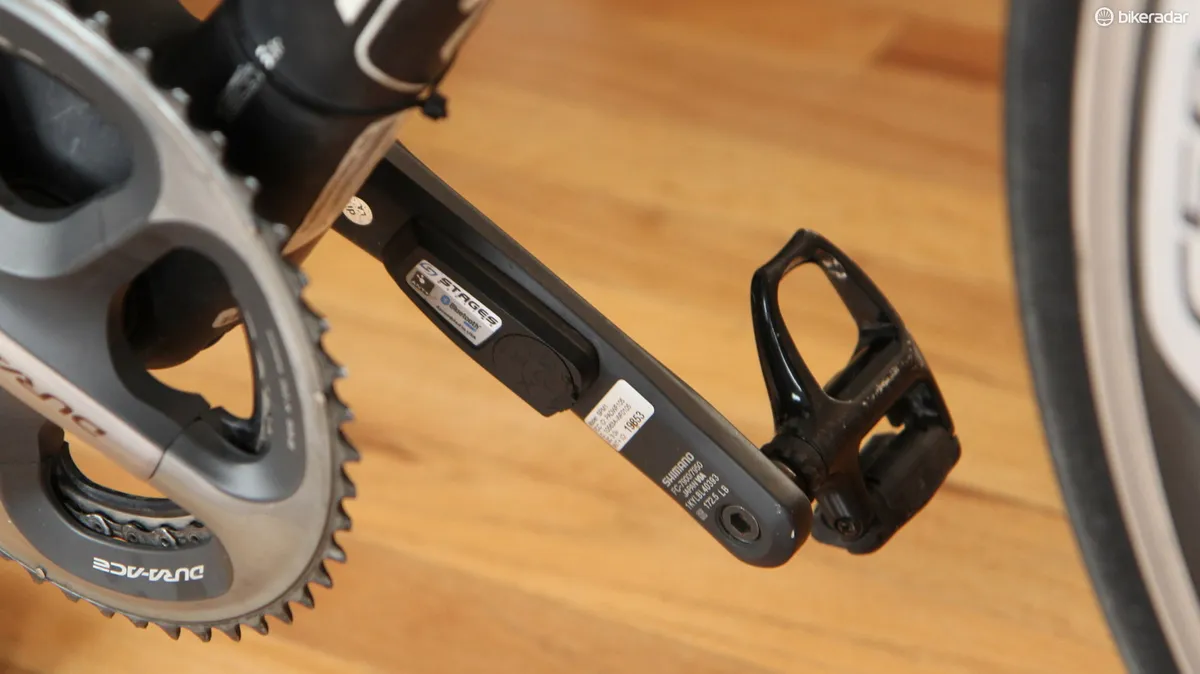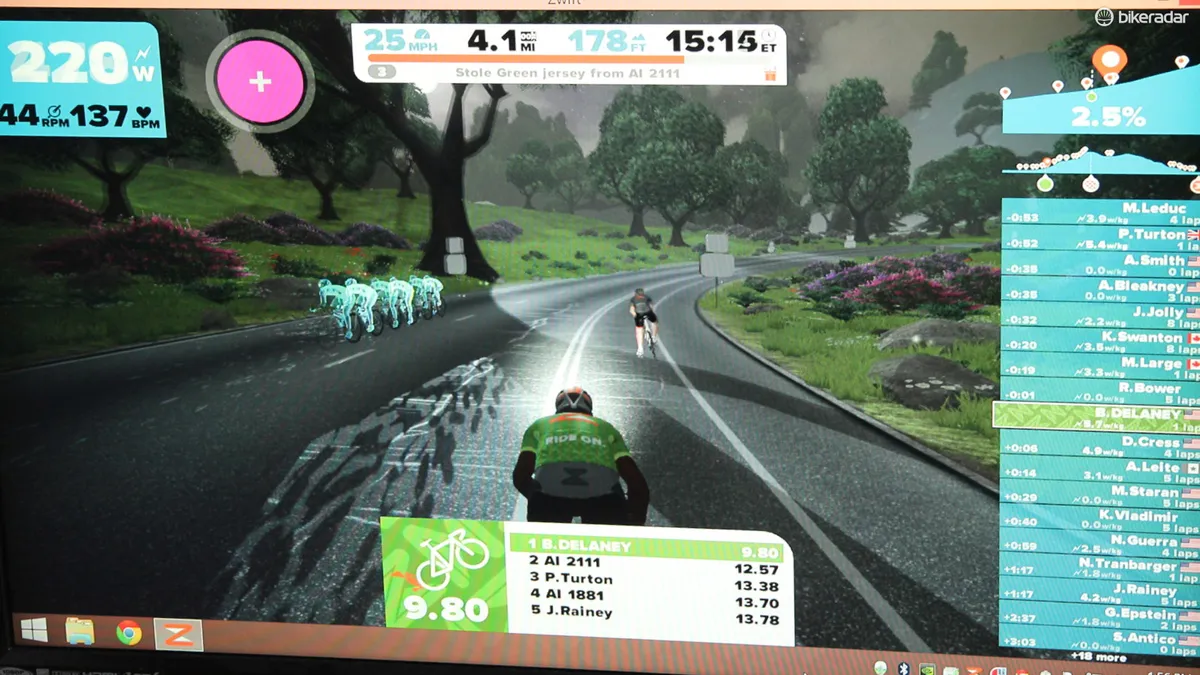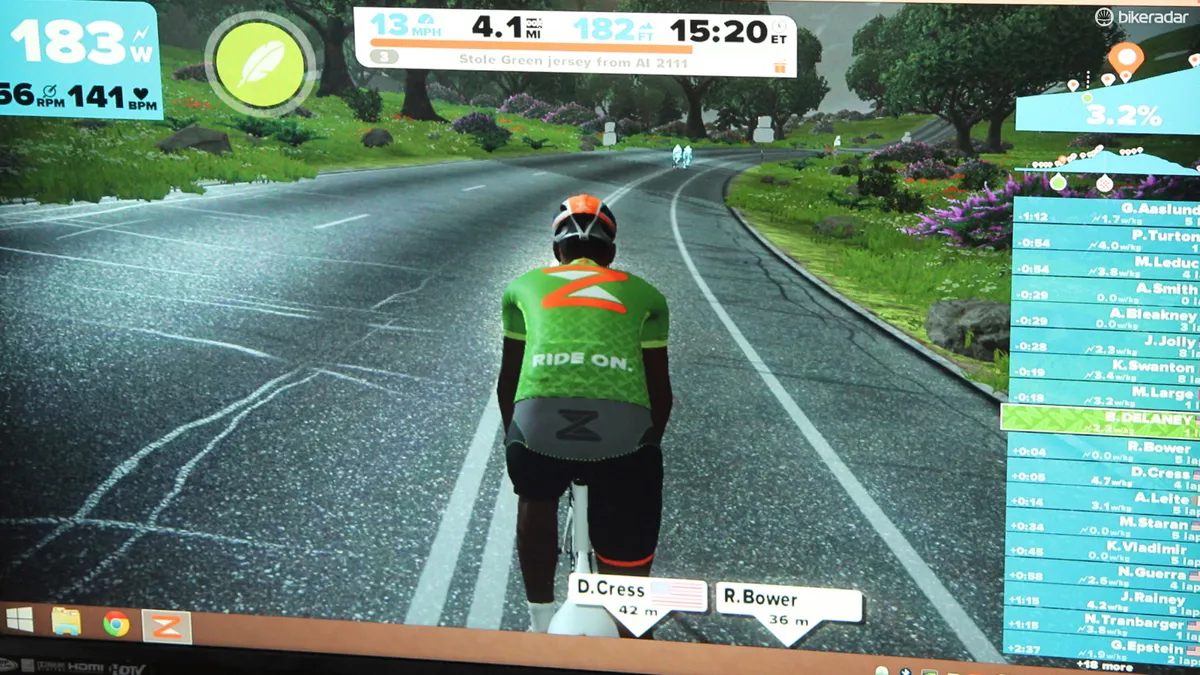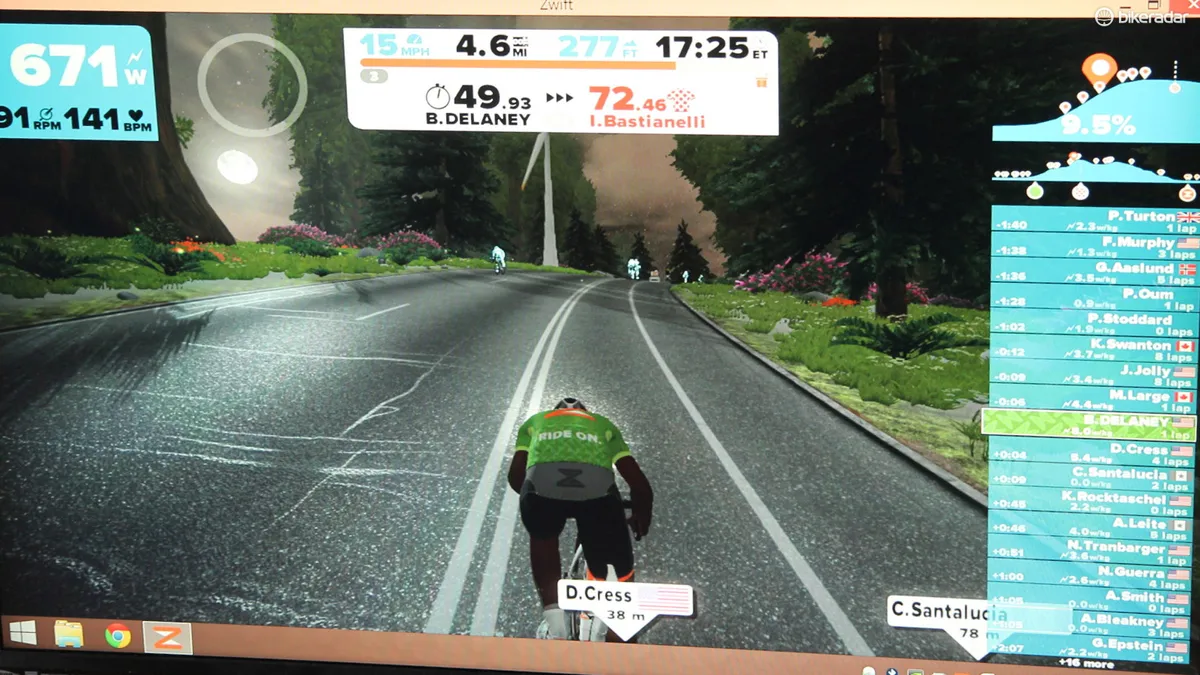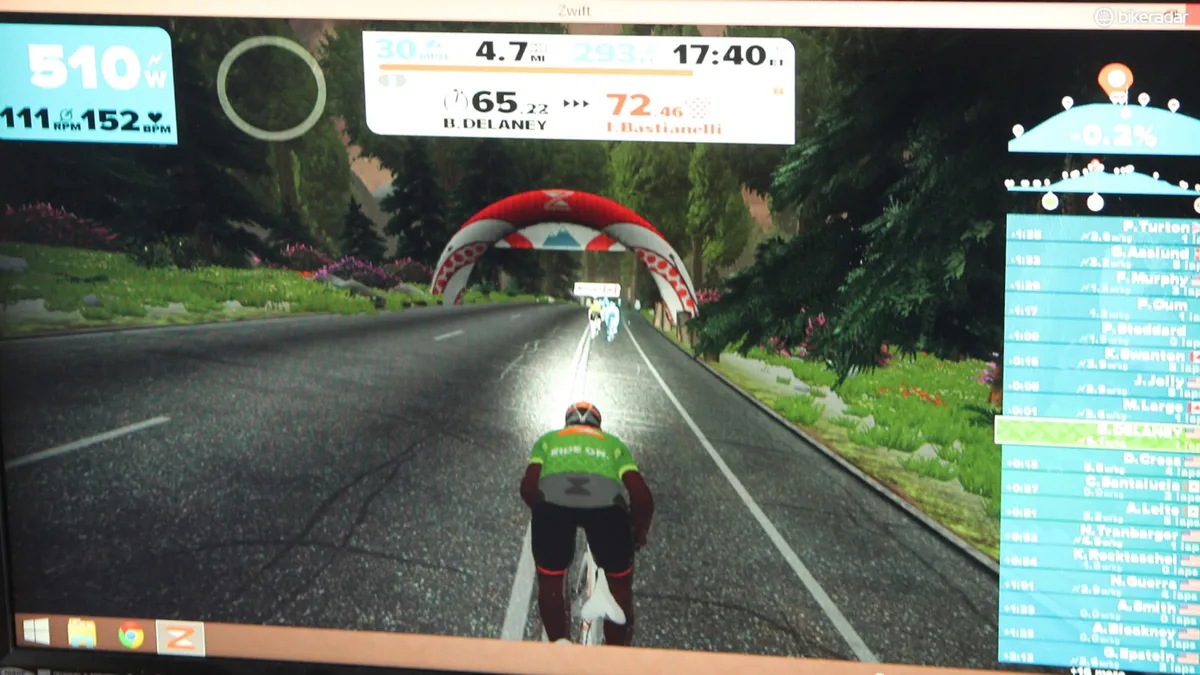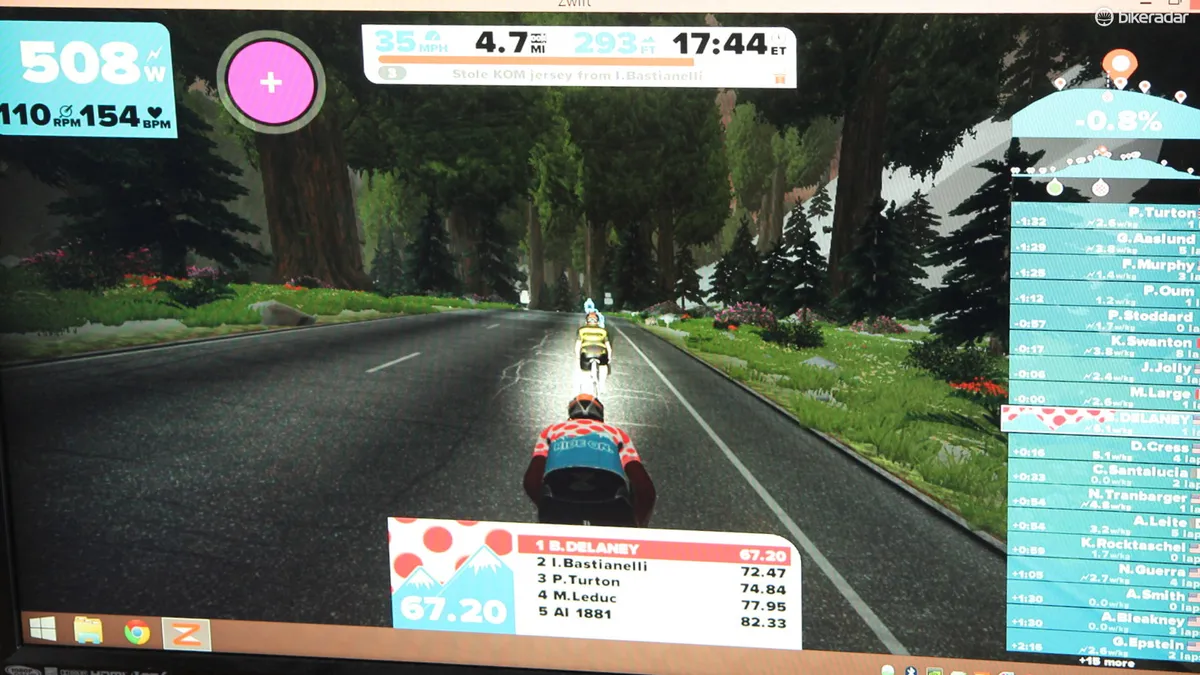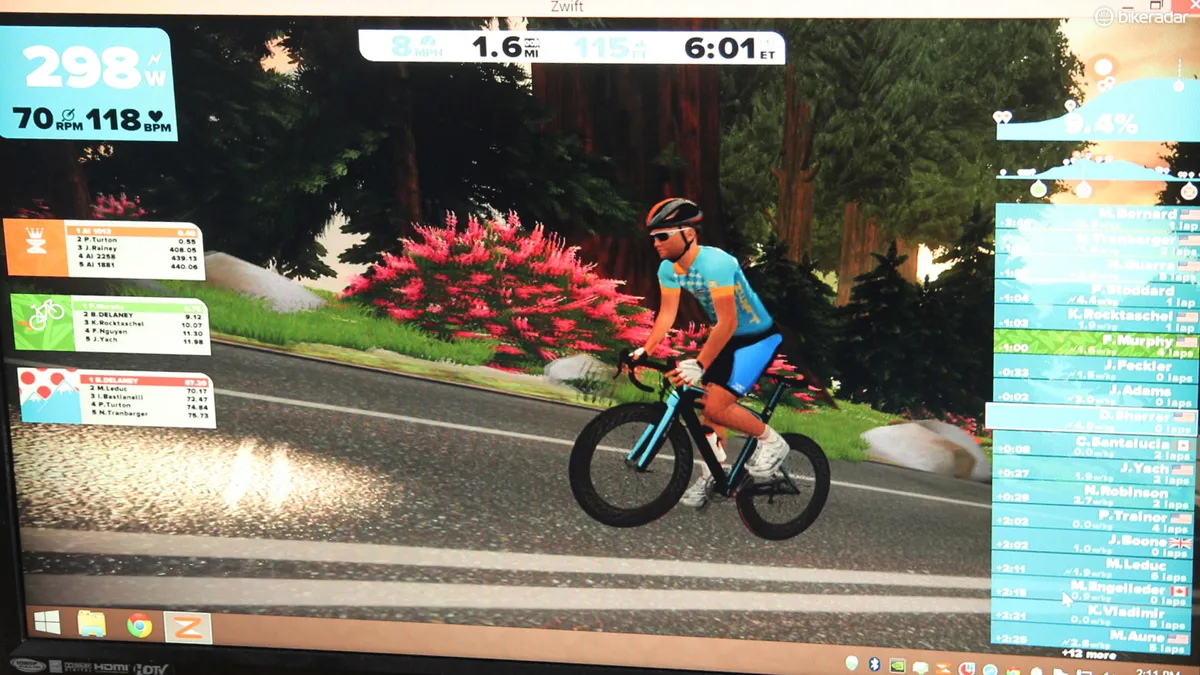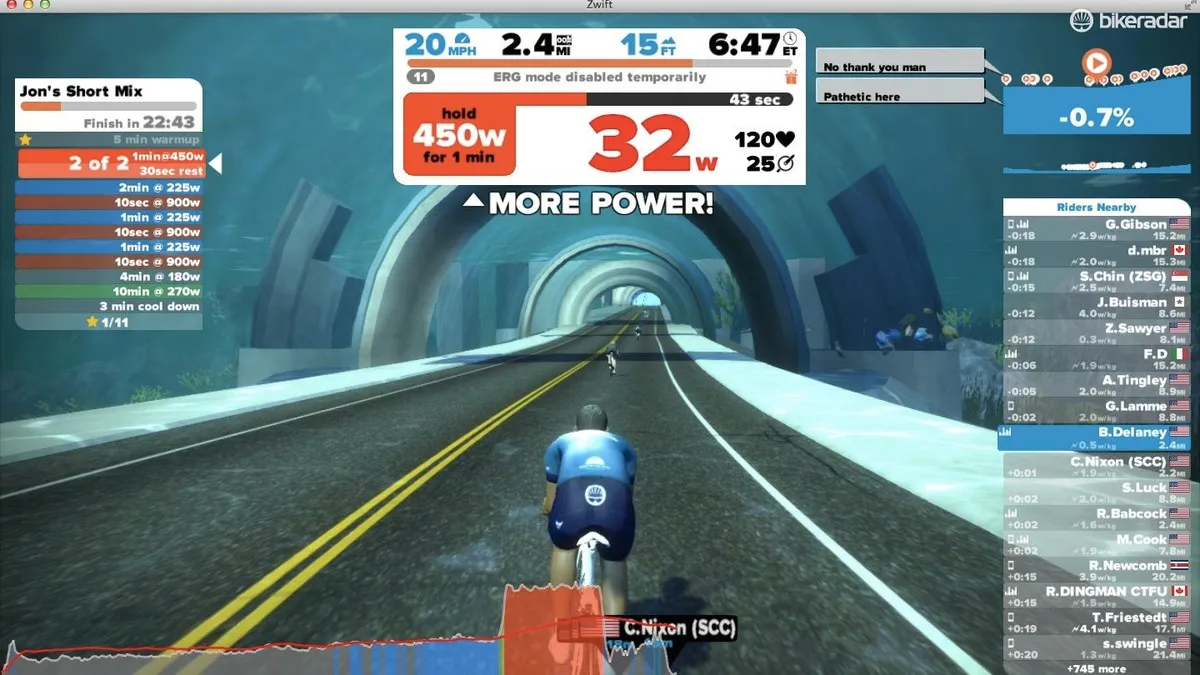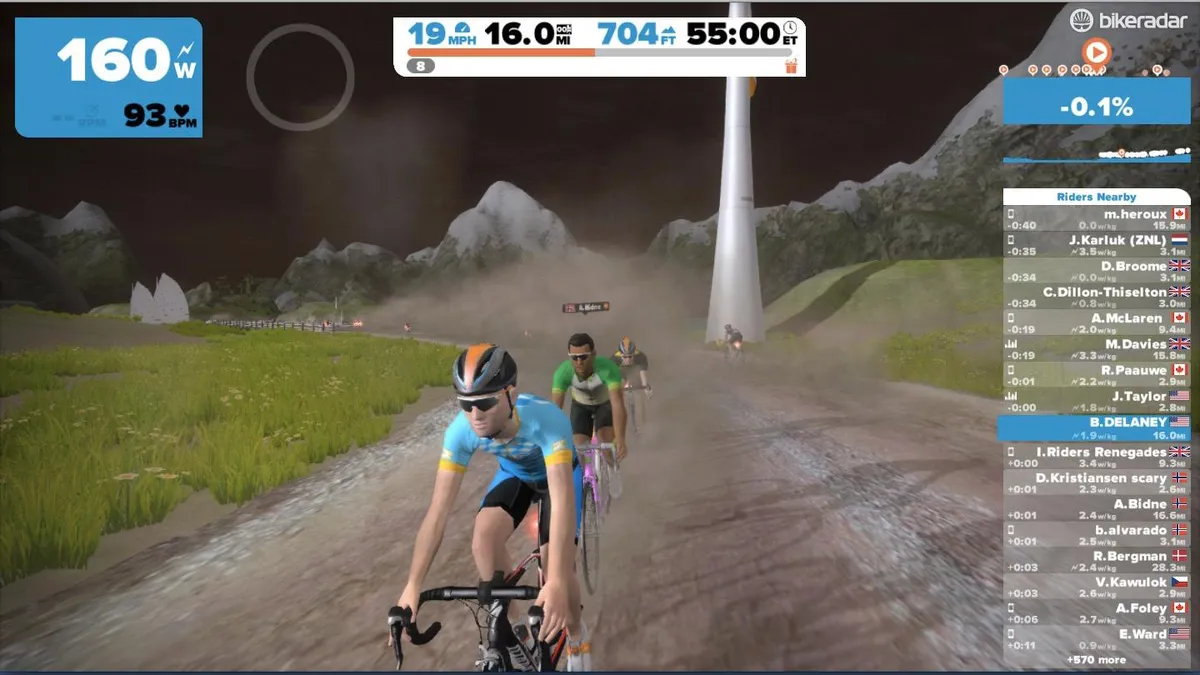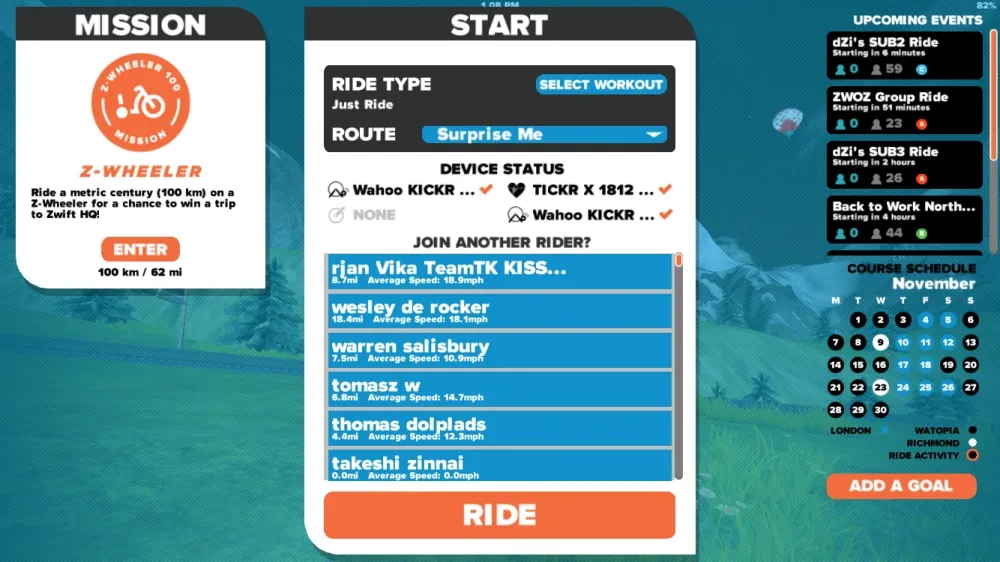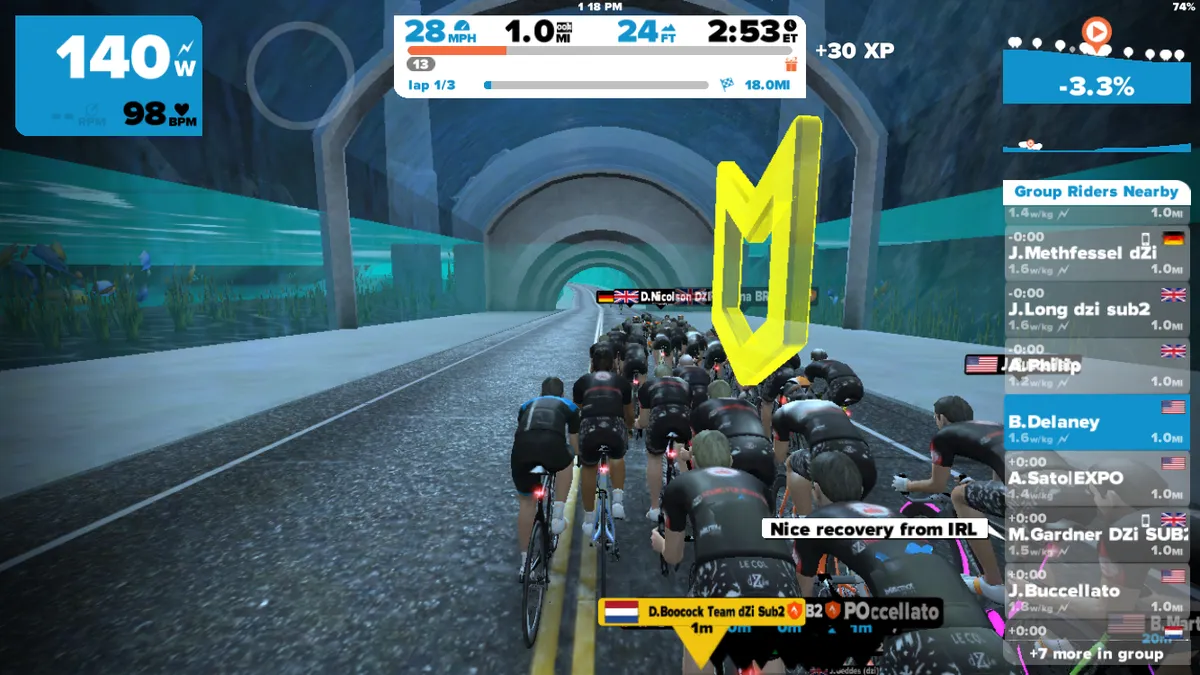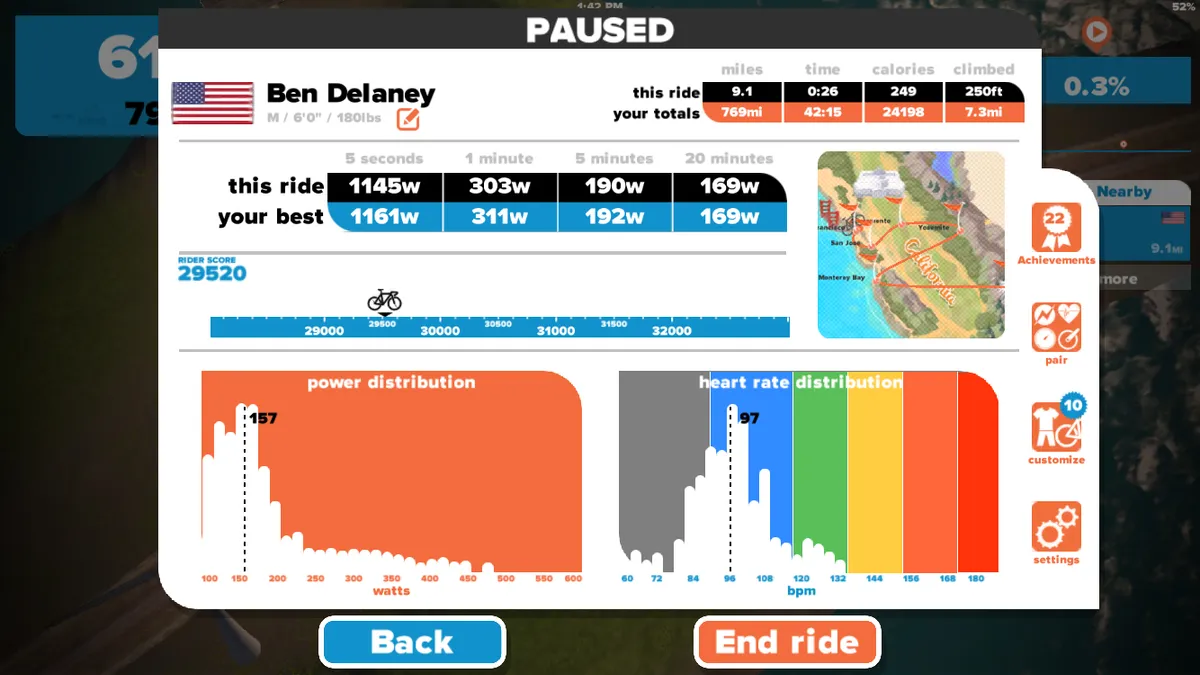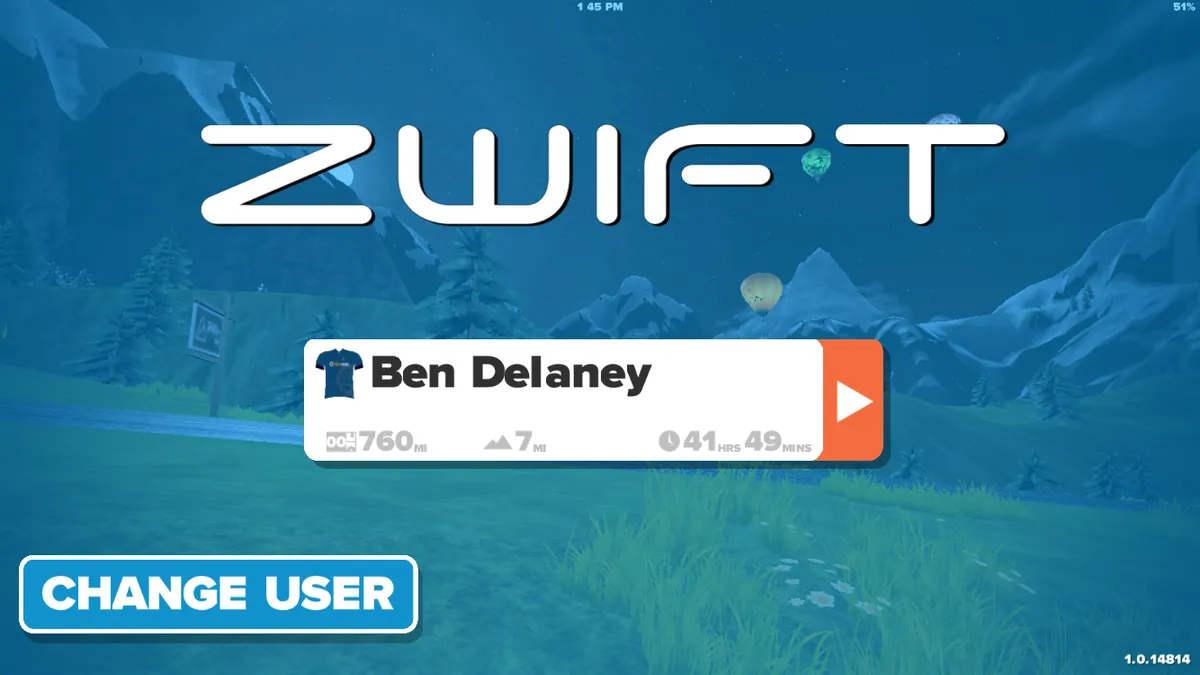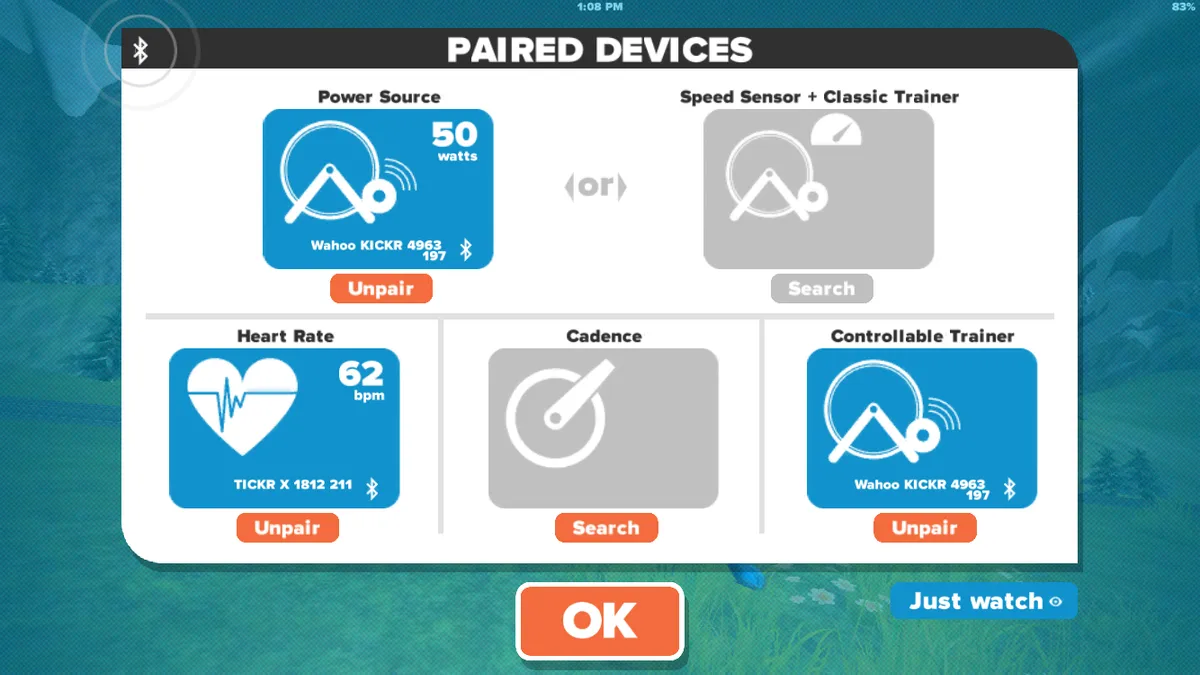With a good internet connection, a trainer and smartphone, tablet or computer, riders across the world can ride with and even race each other inside the Zwift videogame. Your pedal power propels your customized avatar around various courses, from replicas like London and Richmond to fantasy Zwift island. If you have a smart trainer, the game will control the resistance — hit a climb and it gets harder. With Workouts, you can pick specific training sessions instead of chasing avatar packs around.
Updated January 2017
Zwift's Workout mode offers structured training
While the graphics are far and away the best of any multiplayer cycling videogame (compared with the other online options such as Bkool), the primary hook is the interaction with other riders. Speed is based on watts per kilo (enter your weight honestly!), and the game's algorithm allows for drafting. When you start a session, you can choose to ride near other riders and at any point you can jump in with a group. Zwift's Facebook page has a healthy list of group rides and races, too, delineated by the approximate w/kg to give riders a sense of how hard the session will be. When you log in you see a menu of upcoming events that you can join with a click.
For comparison, Bkool, the Spanish simulation software, has scores of courses that you can ride solo or with others. The graphics aren’t as good, but the options are much more plentiful. CompuTrainer arguably pioneered this head-to-head format years ago, but within its own hardware and software ecosystem. The new style multiplayer games, like Zwift, only require conformity to the ANT+ or Bluetooth Smart wireless protocols.
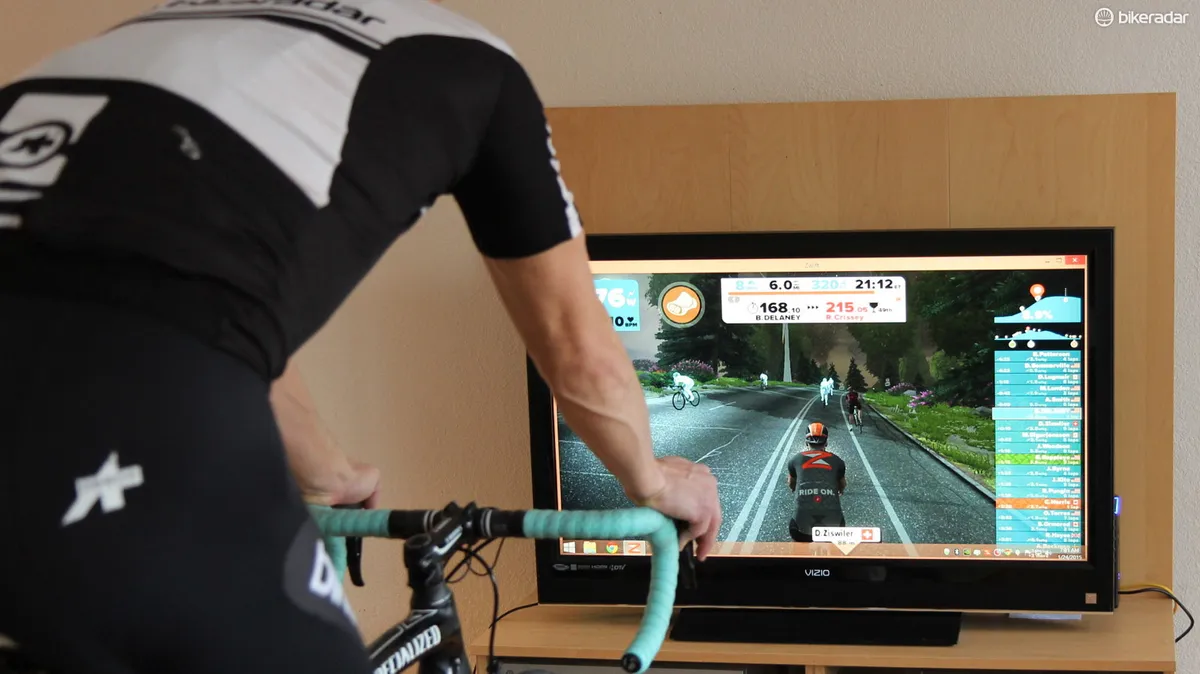
Like a good modern videogame, Zwift has numerous options for setting up how your avatar looks (skin tone, gender, socks or no socks, helmet or no helmet and so on). The more you ride, the more options you get for bikes or jerseys. To get a BikeRadar kit, press "P" after you sign in and enter the code "BIKERADAR".
Initial set up is pretty easy: Zwift searches for ANT+ and Bluetooth devices, which you select with a click. A speed/cadence sensor and a trainer on Zwift’s approved list (Kinetic, Elite, CycleOps) is the basic requirement, but a trainer and a power meter are better (or rollers and a power meter). The best option might be a smart trainer like Wahoo Kickr or Tacx Neo Smart, which not only measures your power and relays that to Zwift, but also changes the resistance to simulate hills, accelerations, drafting and the like.
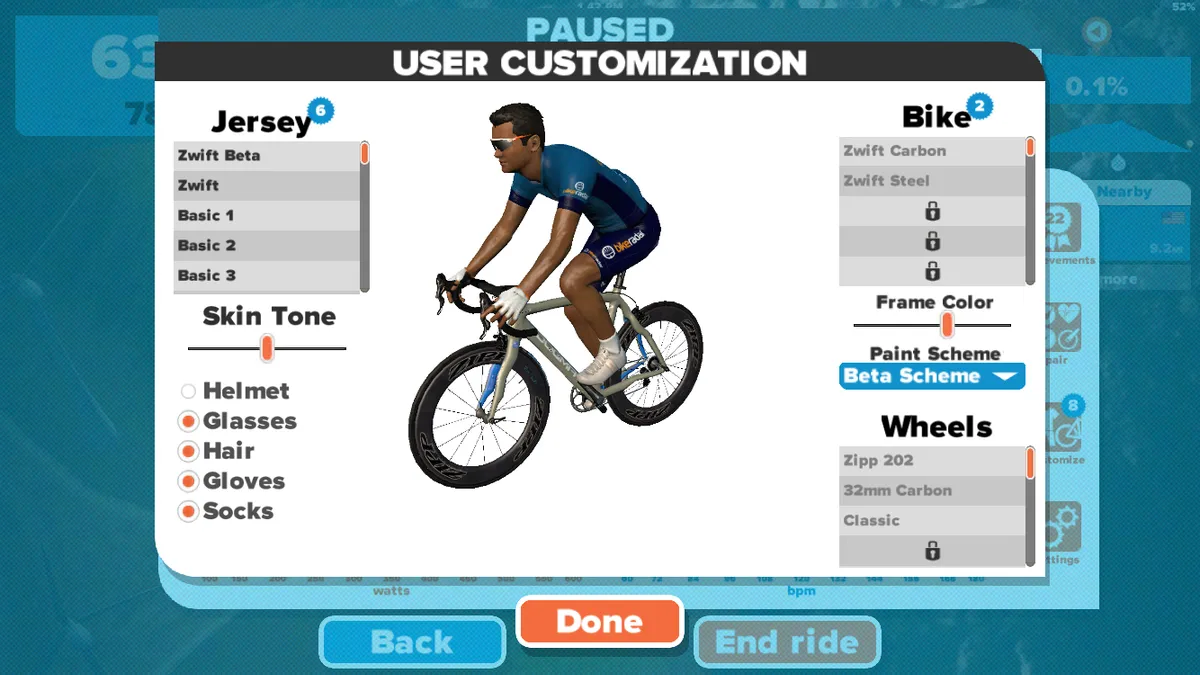
Once your configuration is set up, you are asked whether you want to join someone (there is a scrollable list of active riders) or just start. Then your avatar appears on the screen, one foot unclipped. Set your pedals in motion and your digital guy or gal clips in and starts moving down the road.
There are ‘boosts’ that pop up periodically as you close various markers. A feather icon represents a climbing boost, which effectively boosts your power-to-weight ratio
The Zwift designers have done a great job mimicking the body positions riders take at different speeds and efforts. Sprint hard and your avatar comes out of the saddle, swinging the bike beneath him or her. Ease off and he or she will sit up and take a swig from a water bottle. Going downhill your rider will tuck on the steepest gradients and you'll hear the wind start to whistle.
Drafting a rider reduces the effort required from you, and audio and visual cues prompt you to stay in the draft (“close the gap!”). Some testers find it a little challenging to ride smoothly in the draft, but the experience is much smoother than that offered by Bkool. Also, the draft in big groups or races isn't quite as substantial as when actually riding outside.
There are numerous carrots along the way for motivation, some pulled from the real world and some decidedly videogame bonuses. There is a sprint and a KOM climb, and the fastest time on each among active riders earns you the respective green or polka-dot jersey. Similarly, the fastest lap time among active riders gets you the orange leader’s jersey.

Then there are ‘boosts’ that pop up periodically as you close various markers. A feather icon represents a climbing boost, which effectively boosts your power-to-weight ratio, allowing you to climb faster. There are drafting and aero boosts, too.
These boosts are activated by hitting the space bar on your computer. You can turn at road junctions by pressing the arrows on your keyboard or your paired smartphone.
You can change your perspective from the default just-behind-your-avatar to various side angles, above (with helicopter noises, no less), and other variations by pressing the number keys on a computer, or by using the companion app.
The primary draw, in my estimation, is the social, interactive element. It’s cool to see the flags of different nations crop up on the rider board and as riders pull up alongside you. You can jump on their wheel and draft, and you can even chat with them; just press "M" on your keyboard to instant message the group. When you've joined an event, you can message others in that group with your computer or companion app.
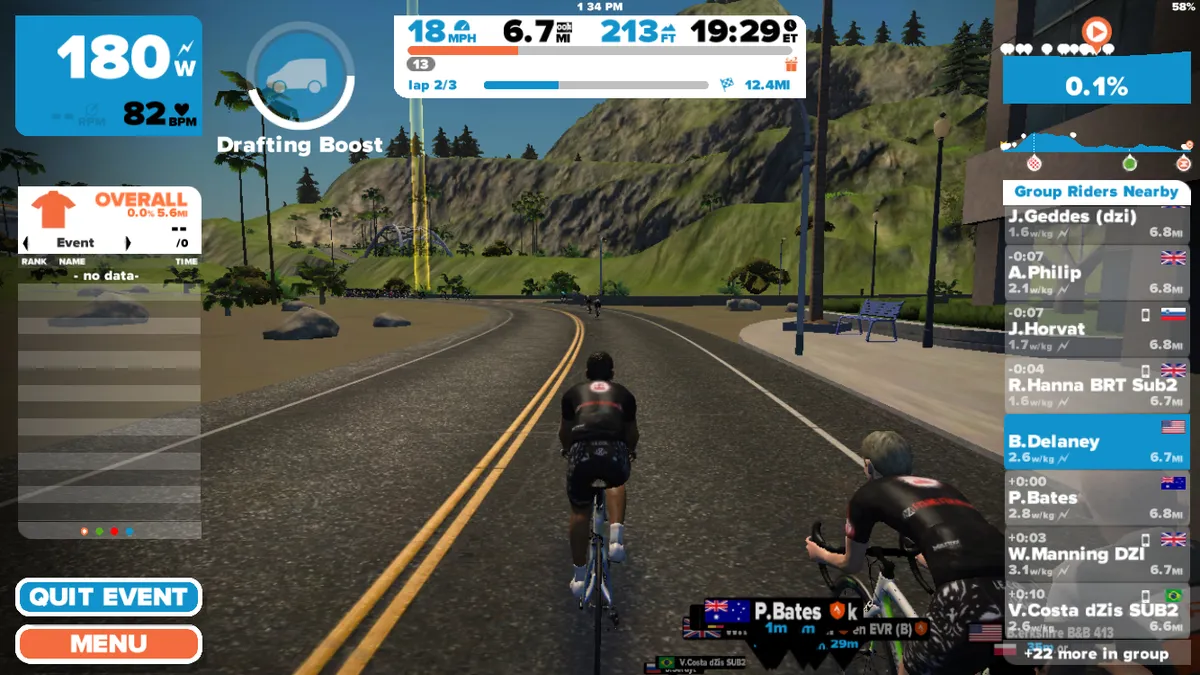
From a training standpoint, the downside to Zwift being like a group ride is that it's like a group ride — it's all too easy to lose all specificity and just go with whatever other riders are doing. This isn’t a bad thing, of course; it just depends on what your goals are. If your goal is simply to ride more when weather, family schedules or other of life’s complications keep you off the bike outside, then Zwift is a great game to play.
Zwift Workouts
Zwift's Workouts offers a menu of interval workouts. You can pick them a la carte whenever you sign in to the game, or you can follow a plan that has daily training regimens. These are all based on your functional threshold power (FTP), which is the most average power you can generate for an hour. If you don't know your FTP, Zwift Workouts has two different tests to use. And don't worry, you don't have to ride full-tilt for a full hour to determine your FTP!
In Workouts, the screen displays your session's details at left, based on time and power. The central dashboard shows the current prescribed and actual power, plus a time and mileage counter. One cool feature in Workouts is the lighted arches that appear at the beginning and end of each interval, giving you intermediate finish lines to shoot for.

For the training-minded, Zwift also recently added an auto-upload feature for TrainingPeaks as well as Strava.
If you already use TrainingPeaks or Today's Plan and have workouts there, those workouts can be imported right into Zwift.
With Workouts, Zwift is clearly going after TrainerRoad, the interactive training software that offers a deep menu of workouts searchable by duration, intensity and training zone.
One ongoing frustration I have with Zwift workouts is that you can't adjust resistance on the fly. For example, say you just did a sprint interval and now Workouts is prescribing a 'recovery' interval of 250w, instead of just being able to use an arrow key like in TrainerRoad to back down resistance Zwift forces the program along. This is only really a problem when using a smart trainer that is driven by the game; with a normal trainer, you can just ignore the prescription. If you are using a Wahoo Kickr, you might be frustrated when using Workouts with short, intense intervals, as the Kickr's algorithm removes acceleration when in ERG mode. What this means is that when a hard interval starts and you try to spin up the gear to speed and target power, it becomes much more difficult than it would outdoors. The flipside is that once target power is achieved, it's pretty easy to hold it right at the prescribed target power. In fact, it almost forces you to do so. Again, this only applies to the Kickr, and we're told that Wahoo will soon offer the option to enable or disable this acceleration feature.
Mobile app
Zwift has had a companion app for a while, which riders could use for chat and other functions while a computer housed the actual game interaction. Now the can app house the game itself, too. This means that all you need is a smartphone or tablet (and Bluetooth trainer, speed/cadence sensor or power meter) to play Zwift.
On the upside, the convenience is great; no hunting for ANT+ dongles, no dragging a laptop into the garage, no worrying about sweating or otherwise damaging said laptop. I wouldn't recommend using a smartphone for the game — the small screen makes details of the game hard to see — but a tablet is a good option.
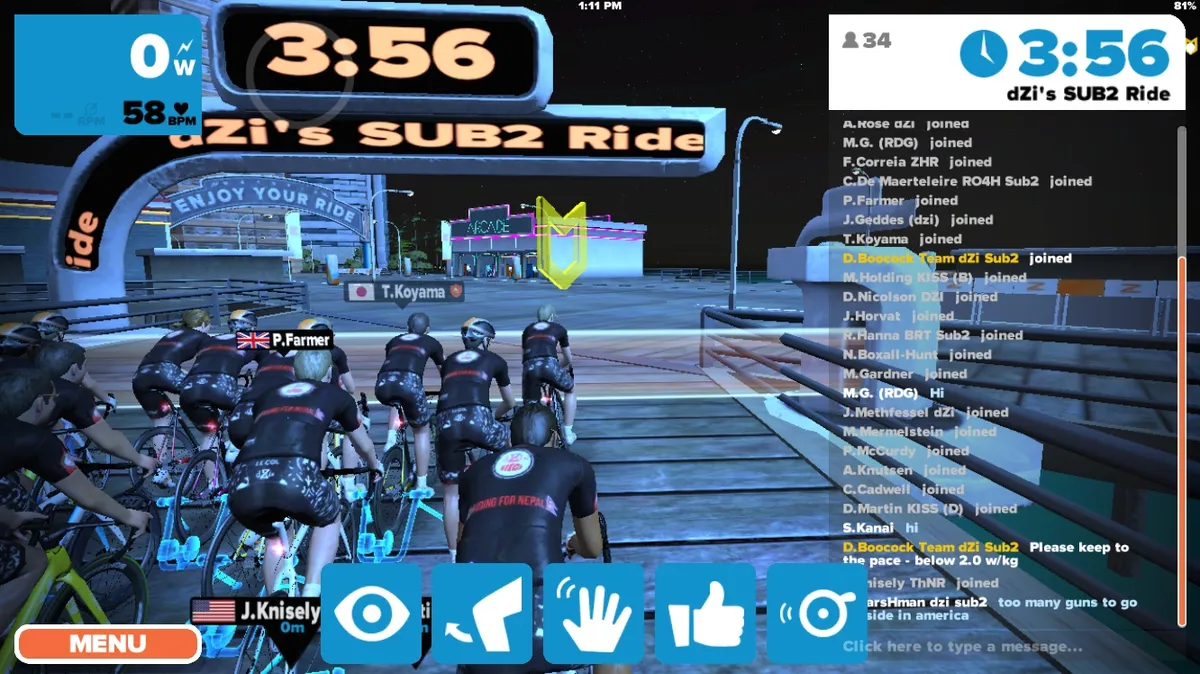
Some elements greatly benefit from the touchscreen medium — you can swipe to hide or expose various menus and the chat screen.
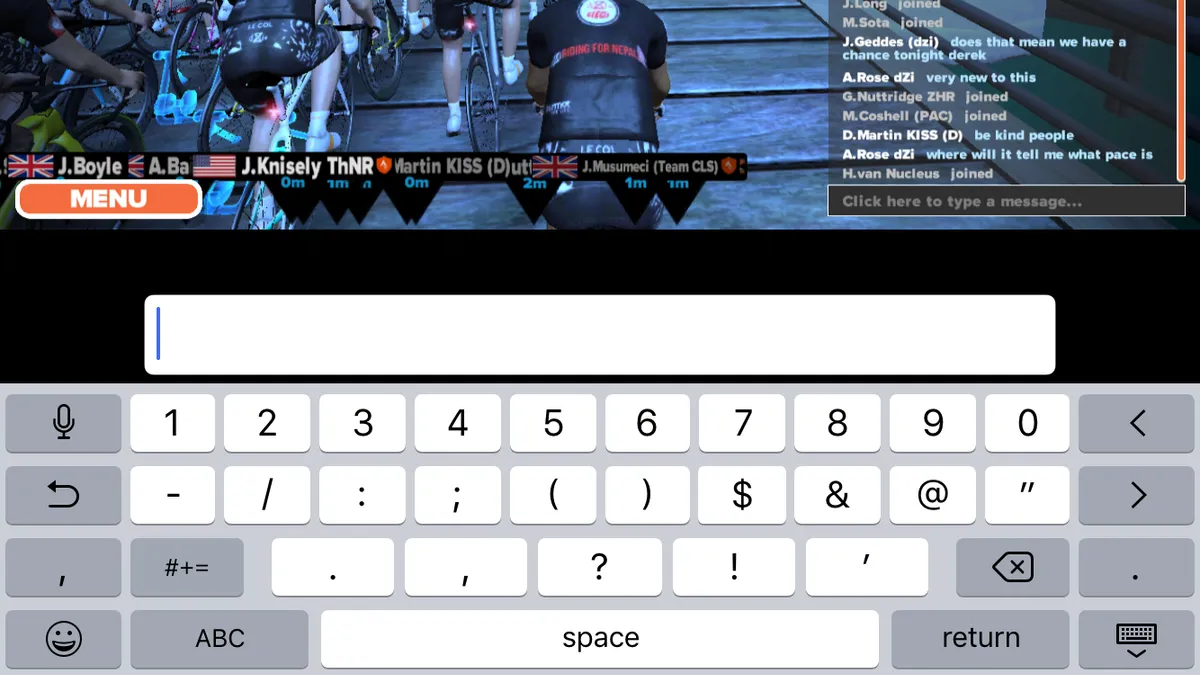
Bottom line — Zwift is a great winter tool
Workouts aside, 'just riding along' on a trainer is a horrible idea, something that most of us can't do for more than a couple of minutes. With Zwift, just riding along is like participating in a group ride — it's all too easy to get swept along. And when the weather or life prevents you from getting out on the road, this can be a wonderful thing.
Zwift is available for a monthly subscription of £8 / $10.
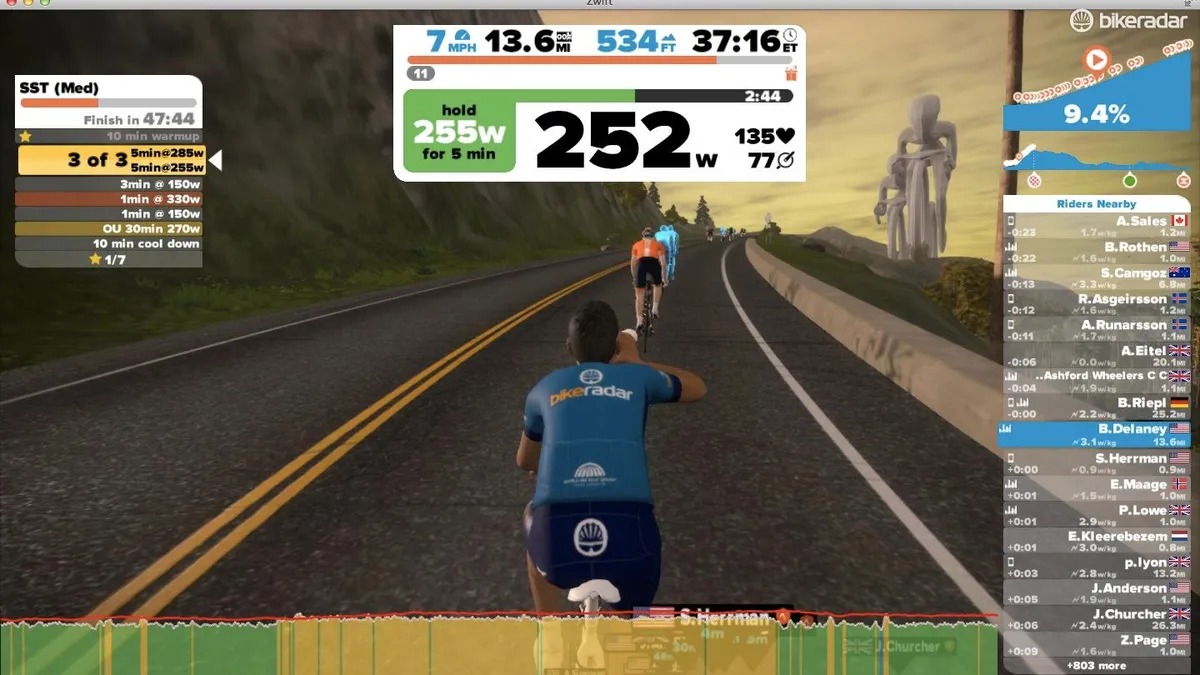
We went to the Rapha cafe in London to check out Zwift
Article update 9 February 2018

